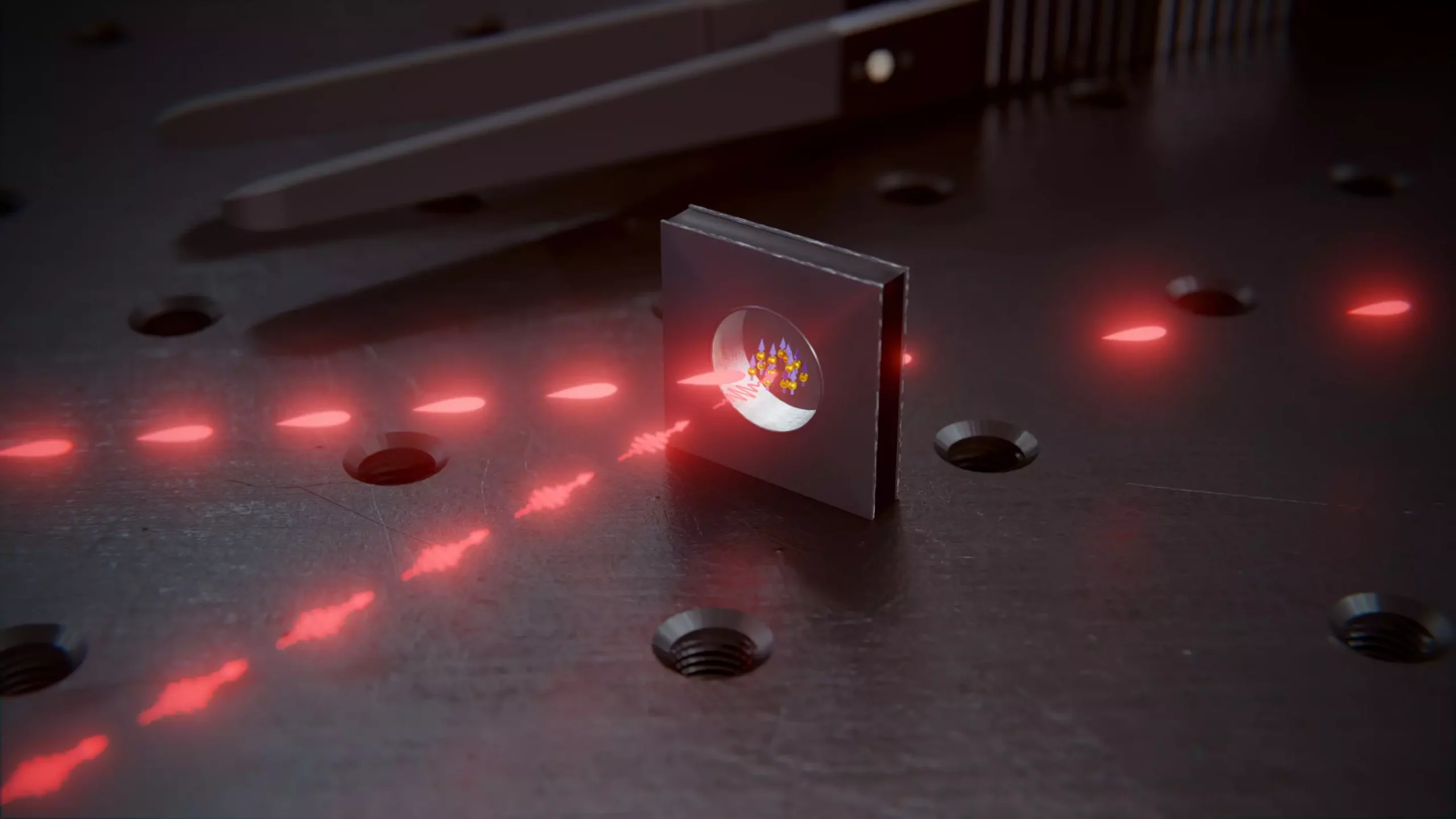The University of Basel has recently made significant progress in the field of quantum memory by successfully building a miniature quantum memory element using atoms in a small glass cell. This breakthrough holds immense potential for the future development of quantum technologies, including tap-proof message transmission through quantum cryptography and interconnections between quantum computers. Led by Professor Philipp Treutlein, the research team has devised a micro-fabricated memory element that can be mass-produced, bringing us one step closer to the realization of efficient quantum networks. Their remarkable findings have been published in the esteemed journal Physical Review Letters.
When it comes to transmitting quantum information, light particles, or photons, are the ideal choice. Photons possess the ability to transmit quantum information via fiber optic cables, satellites, and quantum memory elements. The fundamental challenge lies in precisely storing the quantum state of photons within a memory element and successfully converting it back into photons when required. In a previous experiment, the researchers at the University of Basel achieved this using rubidium atoms in a large handmade glass cell. However, for practical applications, these memory cells needed to be smaller and capable of mass production.
Pioneering Techniques for Efficient Quantum Storage
To overcome the challenges of miniaturization, the research team developed innovative strategies. They obtained smaller glass cells, measuring only a few millimeters, from the mass production of atomic clocks. This involved raising the vapor pressure by heating the cell to 100°C, ensuring a sufficient number of rubidium atoms for quantum storage despite the reduced size. Additionally, the atoms were exposed to a magnetic field over 10,000 times stronger than Earth’s magnetic field, causing a shift in atomic energy levels and facilitating the storage of photons using an additional laser beam. This groundbreaking approach allowed for photon storage for approximately 100 nanoseconds, during which free photons would have traveled a distance of 30 meters. Professor Treutlein emphasizes, “We have built, for the first time, a miniature quantum memory for photons with the potential to produce around 1,000 copies simultaneously on a single wafer.”
In the initial experiment, the researchers successfully demonstrated storage using strongly attenuated laser pulses. However, their future plans include collaboration with the CSEM in Neuchatel to explore storing single photons in these miniature cells. Furthermore, the format of the glass cells requires optimization to maximize photon storage while preserving their quantum states for extended periods. These ongoing efforts will pave the way for the development of compact and efficient quantum memory elements, bringing us closer to a future where quantum technologies play a transformative role in our daily lives.
The advancements made by the University of Basel have far-reaching implications for quantum technologies. A reliable and scalable quantum memory element opens up endless possibilities for the secure transmission of messages and the interconnection of quantum computers. Quantum cryptography holds the promise of unparalleled data security, while quantum computing offers the potential to tackle complex problems beyond the capabilities of classical computers. As we move closer to a quantum revolution, the University of Basel’s achievements provide a solid foundation for the development of practical quantum networks, propelling us into a new era of communication and computation.
The remarkable progress made by the University of Basel in building a micro-fabricated quantum memory element using atoms in a small glass cell showcases the immense potential of quantum technologies. The successful storage and retrieval of photons within these miniature cells pave the way for the mass production of reliable quantum memory elements, vital for the development of secure quantum networks. As we enter the era of quantum technology, the University of Basel’s breakthrough brings us closer to a future where the power of quantum mechanics revolutionizes our daily lives.


Leave a Reply